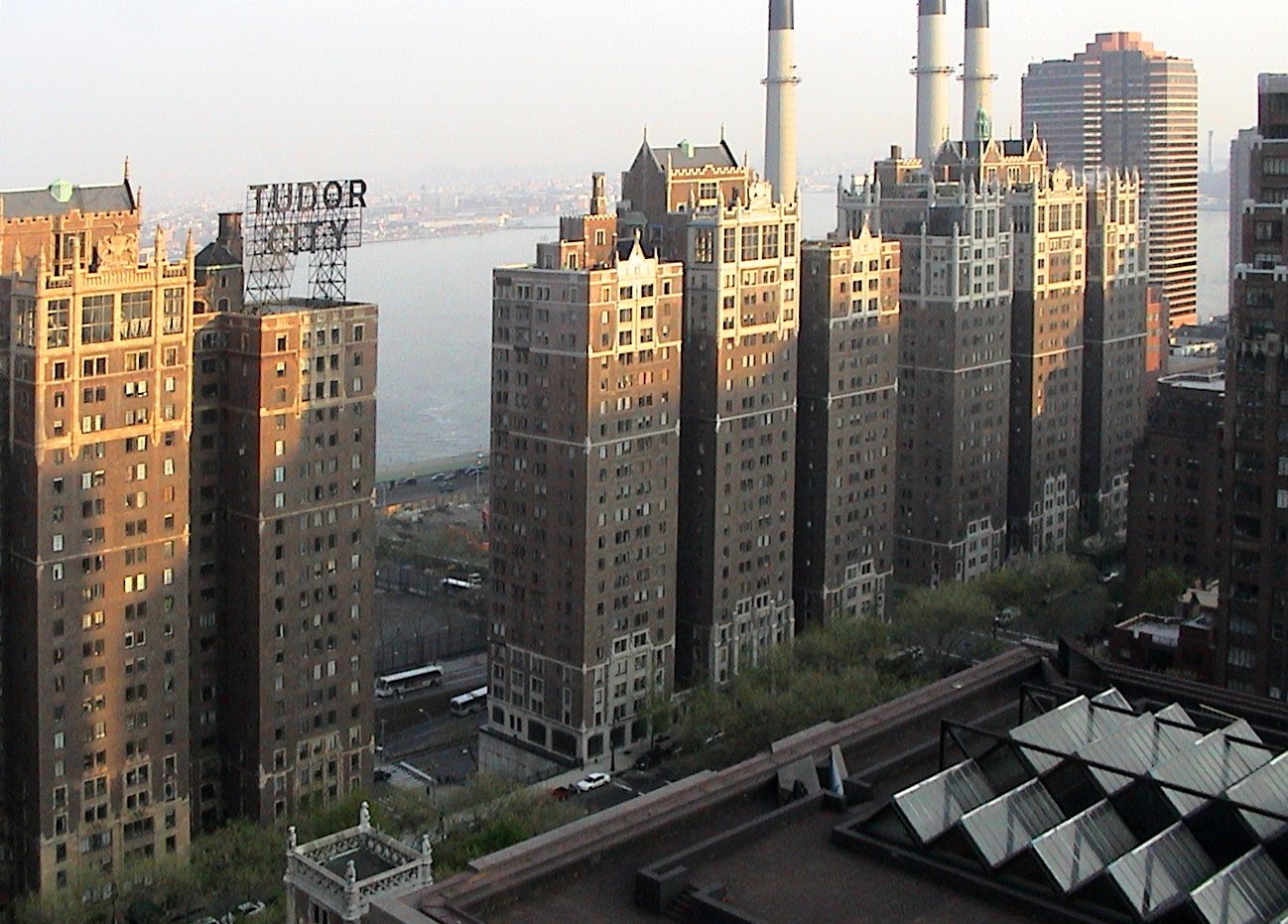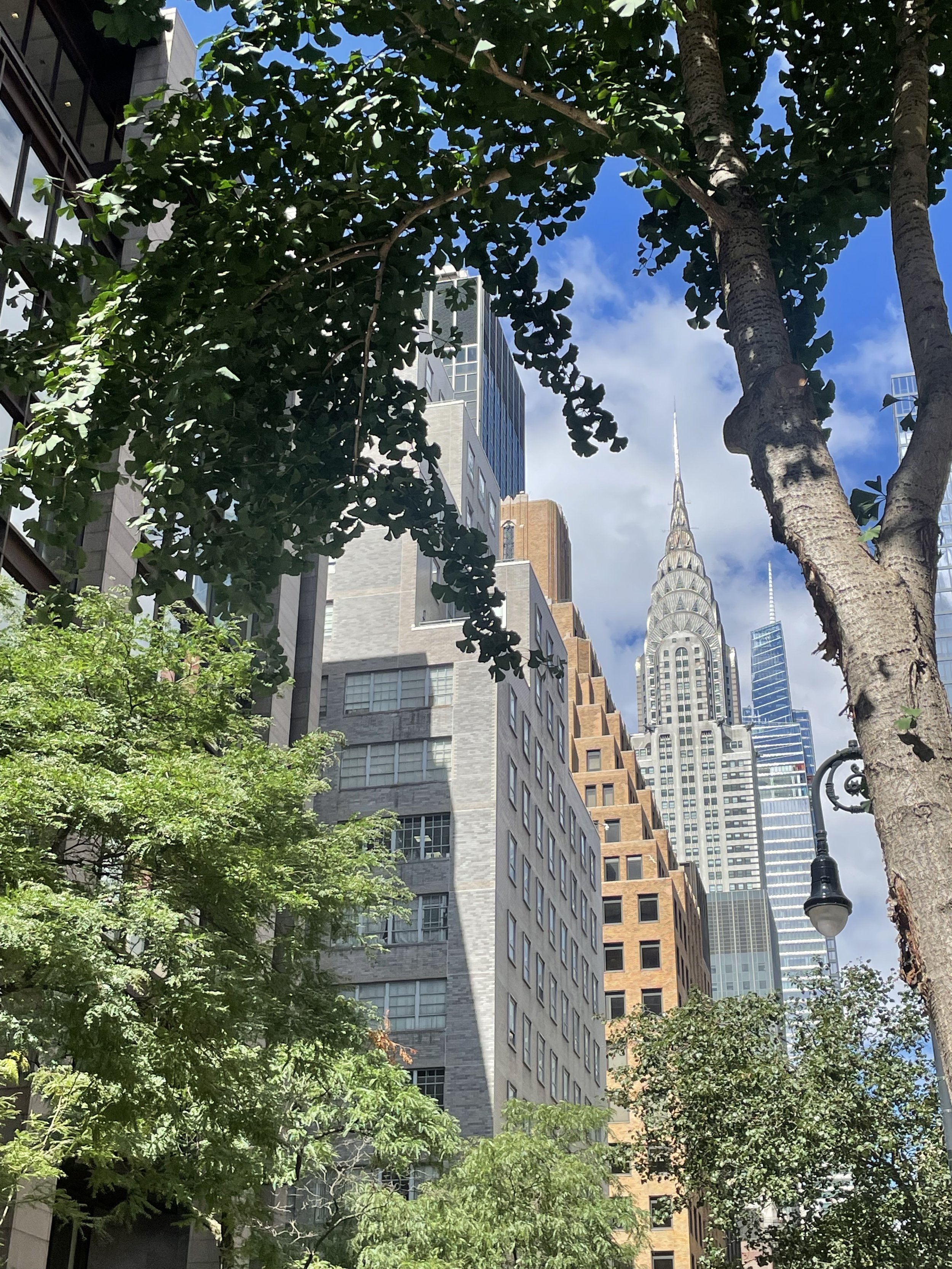Tudor City
When I first moved to New York City in 2000, I spent many of my lunch breaks sitting in Tudor City at their private park, Tudor City Greens. I worked right around the corner and loved the quiet oasis that the very isolated neighborhood provided.
Tudor City is a small U-shaped neighborhood that is only accessible from either 41st or 43rd streets and is elevated over First Avenue. Across from it on First Avenue sits the United Nations headquarters. One of the elements that fascinated me and pushed me to study Tudor City was when I noticed that all of the windows facing the East River were very tiny. When developing Tudor City, why wouldn’t they have massive windows looking out over the river and into Queens?
View of 2nd Ave looking up from 42nd St - Photo from NYPL Digital Archive
It’s hard to believe now, but the Tudor City area (Midtown East, Murray Hill and Turtle Bay) were slums in the time after the Civil War. First Avenue was covered with slaughterhouses and factories, making it far from desirable to live around. Most people had started moving into the suburbs in search of a better life.
An entrepreneurial real estate agent named Leonard Gans convinced Paine Edson of the Fred F. French Company (developers) that there might be a market for middle class apartments within walking distance to Grand Central. And so in 1925, the concept for the first middle class residential community was born.
Photo from NYPL Digital Archives
Photo from Wurtz Bros
Tudor City is named for its Tudor Revival architecture and to this day is still a wild departure from anything else in New York City. With wooden entry doors and carved motifs on every building, you really feel like you’re time traveling back to 16th-century Europe. It’s also still used by many commuters coming and going through Grand Central and there are always numerous real estate listings available for purchase. Currently, I have a client who is interested in purchasing in Tudor City so I’ve been spending a lot of time there.
Photo from WikiCommons
If you’re ever in Midtown East and have some time, you should definitely take a walk through Tudor City.
View looking from Tudor City West - Photo from Chris Baker




